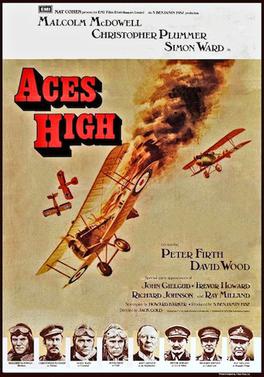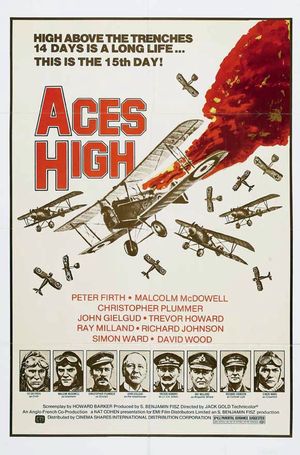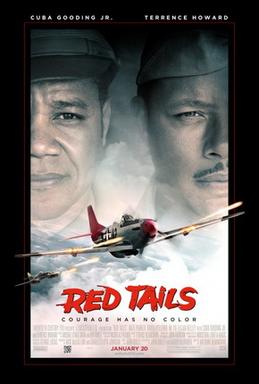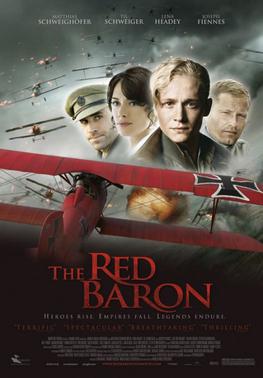The semi-finals are set:
#5 The Blue Max vs. #11 Aces High
#1 Battle of Britain vs. #15 Angel's Wing
VS.
FIRST QUARTER:
Acting
“The Blue Max” has a fine cast. George Peppard does a fine job as
Stachel. He is a jerk, but he has his
reasons and some of his actions are justifiable due to his treatment by the
snooty upper crust officers. The
supporting cast is strong. Jeremy Kemp
is surprisingly good as Klugerman and Karl Vogler develops Heidermann into the
most compelling character. James Mason
is perfectly cast as the Machiavellian general.
The one weak link is Ursula Andress partly because she remains clothed
mostly. Considering why she was cast she
actually acquits herself well and her scenes with Peppard have some chemistry
to them. A
“Aces High” does not have a cast as strong as “The
Blue Max”, but it gets some fine performances.
Malcolm McDowell is fine as the squadron leader who uses alcohol and
cynicism to get by. His discomfort with
the arrival of a young friend who idolizes him is intriguing. He gets excellent support from the always
dependable Christopher Plummer as the stereotypical father figure that you see
in many WWI air combat movies. Simon
Ward as the cowardly Crawford and Peter Firth as the neophyte Croft are merely
adequate. B
FIRST QUARTER SCORE:
The Blue Max 9
Aces High 8
SECOND QUARTER:
Pilot Behavior
“The Blue Max” does not break any new ground in
portraying WWI fighter pilots as partying hard in spite of the loss of squadron
mates. The movie twists this by having
his mates criticize Stachel’s unconcern for a wingman’s death by having him
explain that in the trenches they did not have time to mourn. It does throw in a dynamic appropriate for
the German air force. Stachel is not
accepted partly because not only is he coming up from the infantry, but he is
from a middle class family. The
camaraderie (aside from the ostracism of Stachel) is clear. The competition is not friendly because of
the crass greed for kills exemplified by Stachel, so that behavior is a bit
overplayed for plot purposes. B
“Aces High” has a more standard depiction of WWI
fighter pilots. The squadron is a
heterogeneous small unit that manages to cover all the archetypes of WWI air
combat. There is the cynical ace who
leads the squadron the help of liquor, the class clown, the pilot who can’t
take it any more, the naïve newbie. This
being a British squadron, they have an appropriate amount of stiff upper
lips. Where “The Blue Max” attempts to
portray the class consciousness between Stachel and the rest of the officers,
“Aces High” targets the gulf between the officers and the enlisted. B
HALF TIME SCORE:
The Blue Max 17
Aces High 16
THIRD QUARTER:
Tactics
“The Blue Max” pays lip service to wing men, but once
the action begins it’s every man for himself.
This is a pretty standard mistake in dogfighting movies. The attack on the observation balloon
realistically shows that the balloon would have a fighter patrol protecting it. The movie puts too much emphasis on fighters
strafing infantry and features two scenes of this activity. Not that it didn’t happen. The basic tactic of bouncing the enemy by
surprise from above and behind is clearly reenacted. B
“Aces High” is strong on tactics. There is an attempt to show the use of wing
men. The attacks are from close in and
originate from behind (although seldom from above). The tactics by both sides in the observation
balloon attack are realistic. The movie
includes a rare reenactment of a photo recon mission. A
THIRD QUARTER SCORE:
The Blue Max 25
Aces High 25
FOURTH QUARTER:
Entertainment
“The Blue Max” was intended as an epic WWI air combat
movie. It is a big budget effort,
especially in the number of aircraft assembled.
In fact, the biggest misstep in the film is an attempt to go big with a
trench warfare scene that comes off as silly because the movie has the British
leaving their trench to meet the German attack in no man’s land (and thus open
themselves up to strafing). It differs
from most movies of this subgenre in that it features some sumptuous
interiors. The plot has soap opera
elements to it. Most obviously in its
love quadrangle. The main plot line of
an ambitious commoner who rocks the boat with his crass quest for glory is
interesting and unusual. Its resolution
is satisfactory and not predictable. B
“Aces High” is a much smaller movie than its
opponent. It does not complicate the
plot with a romance. It has no
subplots. It makes a good starter movie
for anyone wanting a taste of WWI dogfighting.
It moves smoothly from exposition and character development to a variety
of combat missions. The effects and
aircraft are satisfactory for a low budget effort. It is admirably unpredictable, but the basic
arc is not radical. If you like singing,
the movie has six songs! B
FINAL SCORE:
The Blue Max 33
Aces High 33
*** As the
tie-breaker, I am going to use the quality and quantity of dogfighting. “The Blue Max” has over 21 minutes of
dogfighting and “Aces High” has only 15.
The depiction of actual dogfighting is superior in “The Blue Max” partly
because of its more expansive air force.
It also has better stunt flying.
There is no equivalent in “Aces High” to the tree top chase and the
bridge competition. However, “Aces High”
has a better variety of combat missions.
On the other hand, “Aces High” has to be scolded for use of footage from
previous films.


_04.jpg)


.jpg)



